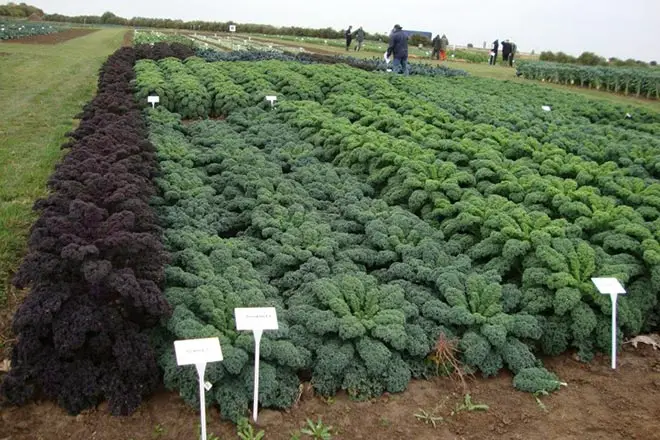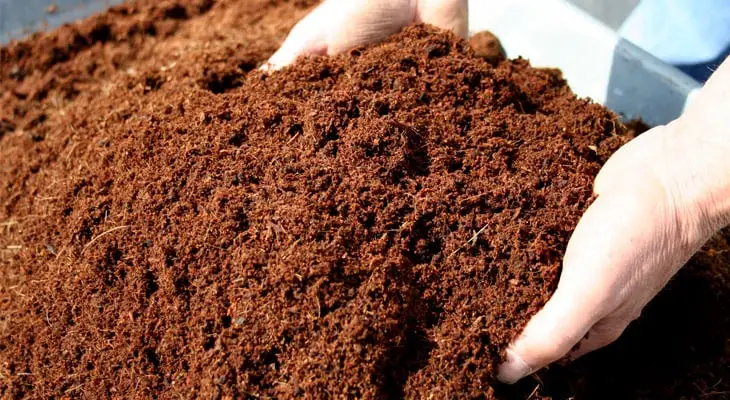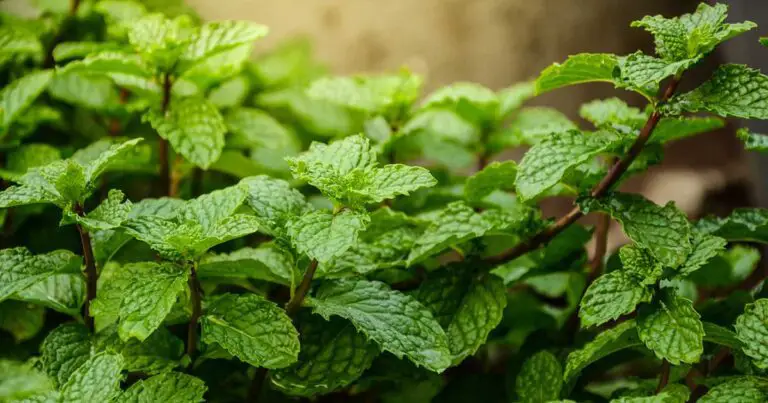Attracting Beneficial Predators to Your Garden
Table of Contents
Why Attracting Beneficial Predators is Important for Your Garden
Attracting beneficial predators to your garden is essential for maintaining a healthy ecosystem and controlling pest populations naturally. These helpful creatures play a crucial role in keeping harmful insects in check, reducing the need for chemical pesticides that can harm beneficial insects and plants. By encouraging a diverse range of predators in your garden, you can create a balanced environment where pests are kept under control without disrupting the natural harmony.
Beneficial predators like ladybugs, lacewings, and praying mantises are voracious consumers of common garden pests such as aphids, mites, and caterpillars. By attracting these allies to your garden, you can effectively manage pest populations without resorting to harmful chemicals. Additionally, these predators can help prevent pest outbreaks and minimize potential damage to your plants, resulting in a more sustainable and eco-friendly approach to gardening.

Identifying Common Beneficial Predators in Your Area
Beneficial predators play a vital role in maintaining the delicate balance of ecosystems, including your garden. By identifying common beneficial predators in your area, you can harness nature’s pest control services to keep your plants healthy and thriving. Some of the most common beneficial predators include ladybugs, lacewings, ground beetles, and praying mantises. These predators feed on harmful pests like aphids, caterpillars, and mites, helping to naturally control pest populations in your garden.
Ladybugs, also known as lady beetles or ladybird beetles, are perhaps one of the most recognized beneficial predators due to their striking appearance and voracious appetite for aphids. Lacewings, characterized by their delicate, lace-like wings, are another beneficial predator that feed on aphids, caterpillars, and other soft-bodied insects. Ground beetles are nocturnal predators that prey on a wide range of pests, including snails, slugs, and caterpillars. Praying mantises are formidable hunters known for their stealthy approach and efficient method of capturing various garden pests. By recognizing and encouraging these beneficial predators in your garden, you can reduce the need for harmful pesticides and cultivate a more sustainable and biodiverse ecosystem.
This table highlights some common beneficial predators in the garden:
| Predator | Description | Role in Pest Control |
| Hoverflies | Resemble bees but have only 2 wings. They visit plants for nectar. Larvae prey on aphids, thrips, caterpillars, and whiteflies. | Important pollinators and effective aphid hunters. |
| Ladybugs | Colorful beetles that feed on aphids, mites, and other soft-bodied insects. | Excellent aphid control and general pest management. |
| Lacewings | Delicate insects with lacy wings. Both adults and larvae consume aphids, mealybugs, and other pests. | Effective aphid and soft-bodied insect predators. |
| Praying Mantises | Carnivorous insects with elongated bodies and strong forelegs. | Devour a wide range of pests, including flies, moths, and grasshoppers. |
| Parasitic Wasps | Tiny wasps that lay eggs inside or on other insects. | Parasitize pests like caterpillars, aphids, and whiteflies. |
| Predatory Mites | Microscopic mites that feed on spider mites and other small insects. | Effective against spider mites and other tiny pests. |
| Ground Beetles | Dark-colored beetles that live on the ground. | Prey on slugs, snails, caterpillars, and other soil-dwelling pests. |
| Dragonflies | Large, agile insects with iridescent wings. | Feed on mosquitoes, flies, and other flying insects. |
| Spiders | Web-spinning arachnids that catch insects. | Control a variety of pests by trapping them in their webs. |
| Nematodes | Microscopic roundworms that parasitize soil-dwelling pests. | Effective against soil-borne insects like grubs and root weevils. |
| Ground Beetles | Dark-colored beetles that live on the ground. | Prey on slugs, snails, caterpillars, and other soil-dwelling pests. |
| Damsel Bugs | Small, slender bugs that feed on aphids, mites, and small insects. | Effective aphid and mite predators. |
| Green Lacewings | Similar to lacewings but bright green. | Larvae consume aphids, caterpillars, and other soft-bodied pests. |
| Assassin Bugs | Stealthy bugs with long beaks. | Ambush and feed on a variety of insects, including aphids and caterpillars. |
| Ground Beetles | Dark-colored beetles that live on the ground. | Prey on slugs, snails, caterpillars, and other soil-dwelling pests. |
| Centipedes | Many-legged arthropods that hunt at night. | Feed on insects, spiders, and other small creatures. |
Creating a Habitat for Beneficial Predators
Creating a habitat that supports beneficial predators in your garden is crucial for maintaining a healthy and balanced ecosystem. By providing a suitable environment for these predators, you can naturally control pest populations and reduce the need for harmful chemical pesticides. Consider incorporating diverse plant species, such as flowering plants and herbs, to attract a variety of beneficial insects like ladybugs, lacewings, and ground beetles.
In addition to planting a variety of species, creating sheltered spaces in your garden can offer refuge for beneficial predators during harsh weather conditions or to seek protection from predators themselves. This can include leaving areas of dense vegetation, rock piles, or providing wooden structures where insects and other predators can nest or hide. Remember, a well-planned habitat not only attracts beneficial predators but also supports their population growth and overall effectiveness in pest control.
Choosing Plants that Attract Beneficial Predators
When selecting plants for your garden, it’s essential to choose varieties that not only beautify your space but also attract beneficial predators to help control pests naturally. By incorporating specific plants that act as attractants for these beneficial predators, you can create a balanced ecosystem that increases biodiversity and minimizes the need for harmful pesticides.
Plants such as dill, fennel, and coriander are known to attract beneficial predators like hoverflies, lacewings, and ladybugs, which are voracious predators of aphids and other garden pests. Incorporating these plants into your garden not only adds visual interest but also provides a food source and habitat for these helpful insects, contributing to a healthier and more sustainable garden ecosystem.
| Factor | Description |
| Avoid Chemical Sprays | Refrain from using chemical pesticides or sprays. These can harm beneficial insects. |
| Companion Planting | Plant companion species that attract and support beneficial predators. Focus on native species for the best results. |
| Create a Habitat | Leave some areas with twigs, logs, and leaves where beneficial insects can live, nest, and pupate. |
| Provide a Water Source | Ensure there’s a water source in your garden for beneficial predators. |
Avoiding Pesticides to Encourage Beneficial Predators
Pesticides, although effective in controlling pests, can have detrimental effects on beneficial predators in your garden. Many beneficial predators, such as ladybugs, lacewings, and ground beetles, are sensitive to chemical pesticides and may be eliminated along with harmful pests. By avoiding pesticides, you allow these natural allies to thrive and maintain a balance in your garden ecosystem.
Instead of relying on pesticides, consider integrating organic and sustainable pest management practices that support beneficial predators. Implementing techniques like companion planting, attracting birds and bats, and introducing beneficial insects can help control pest populations naturally without the need for harmful chemicals. By fostering a healthy environment for beneficial predators, you create a sustainable and environmentally-friendly approach to pest control in your garden.

Providing Water Sources for Beneficial Predators
When creating a welcoming environment for beneficial predators in your garden, it’s essential to consider all their needs, including water sources. Providing access to water can attract and sustain beneficial predators, aiding in natural pest control. Some common beneficial predators, like ladybugs and lacewings, need water not only for drinking but also for reproduction and survival.
Water sources for beneficial predators can be as simple as shallow dishes filled with water strategically placed throughout your garden. Ensure that these water stations are replenished regularly to maintain a fresh and clean supply for your helpful visitors. By incorporating this small but crucial element into your garden’s design, you can further support the ecosystem dynamics that promote biodiversity and sustainable pest management.
Utilizing Companion Planting to Attract Beneficial Predators
Companion planting is a natural and effective way to attract beneficial predators to your garden. By interplanting certain vegetables, herbs, and flowers, you can create a diverse and welcoming habitat for these helpful insects. For instance, planting marigolds alongside tomatoes can attract ladybugs, which are voracious aphid predators. Similarly, growing dill or fennel near cabbage can lure in lacewings, known for their appetite for caterpillars and other pests.
Another beneficial combination is planting sunflowers near cucumbers or squash to draw in ground beetles, which feast on a variety of garden pests such as caterpillars, slugs, and snails. Additionally, interplanting mint with your vegetables can help attract predatory wasps that aid in controlling pest populations. This strategic approach to companion planting not only enhances biodiversity in your garden but also promotes a balanced ecosystem where beneficial predators play a crucial role in pest management.
Using Mulch to Create a Favorable Environment for Beneficial Predators
Mulch plays a crucial role in creating a favorable environment for beneficial predators in your garden. By covering the soil with mulch, you provide a protective layer that acts as a habitat for these helpful insects and animals. The moisture retention properties of mulch also support the survival of beneficial predators, helping them thrive in your garden ecosystem. Additionally, mulch can serve as a food source for some of these predators, attracting them to your garden and encouraging their presence.
Incorporating different types of mulch, such as organic materials like straw, grass clippings, or leaves, can diversify the microhabitats within your garden and attract a wider range of beneficial predators. Mulch not only regulates soil temperature and moisture levels but also acts as a barrier against harsh weather conditions, providing shelter for these helpful organisms. By using mulch strategically in your garden, you can create an environment that promotes the well-being and activity of beneficial predators, ultimately contributing to natural pest control and a healthier garden ecosystem.

Attracting Birds as Beneficial Predators in Your Garden
Birds can be valuable allies in your quest for a pest-free garden. By attracting birds as beneficial predators, you can harness the power of nature to control unwanted insects and pests. Birds such as chickadees, nuthatches, and warblers are voracious insect-eaters and can help keep pest populations in check. Providing bird feeders, bird baths, and birdhouses in your garden can attract these feathered helpers and create a balanced ecosystem.
In addition to controlling pests, birds also contribute to the overall health of your garden by pollinating plants, aerating the soil, and dispersing seeds. Encouraging bird populations in your garden not only benefits your plants but also adds beauty and diversity to your outdoor space. By planting a variety of native plants that produce fruits, seeds, and nectar, you can provide food sources that attract a wide range of bird species. Creating a welcoming environment for birds will enhance the biodiversity of your garden and promote a harmonious relationship between nature and your plants.

Encouraging Bats to Help with Pest Control
Bats are fascinating creatures that play a vital role in the ecosystem, especially when it comes to pest control in gardens. These nocturnal predators have voracious appetites for insects, consuming a large number of pests such as mosquitoes, moths, beetles, and more. By encouraging bats to inhabit your garden, you can effectively reduce the population of harmful insects that can damage your plants and crops.
One effective way to attract bats to your garden is by installing bat houses. These structures provide shelter for bats during the day, encouraging them to stay in your garden and feed on pests at night. Placing bat houses near water sources and away from bright lights will increase the chances of attracting these beneficial predators. Additionally, planting night-blooming flowers can also help attract insects that bats feed on, further enhancing their presence in your garden.
Introducing Ladybugs to Your Garden
Ladybugs, also known as ladybirds or lady beetles, are small insects that are highly beneficial for gardeners due to their voracious appetite for aphids, mealybugs, scales, and other soft-bodied pests that can damage plants. Introducing ladybugs to your garden can be a natural and effective way to control these harmful insects without the need for chemical pesticides. These colorful beetles are not only efficient predators but also serve as pollinators, enhancing the overall health and biodiversity of your garden ecosystem.
Ladybugs can be attracted to your garden by planting a variety of flowers such as dill, fennel, dandelion, and yarrow, which provide them with nectar and pollen for food. You can also purchase live ladybugs from garden centers or online suppliers to release into your garden. Once released, these beneficial insects will help keep pest populations in check, promoting a balanced and sustainable environment for your plants to thrive. By welcoming ladybugs into your garden, you can enjoy the beauty of these beneficial predators while they work diligently to protect your plants from harmful pests.

Attracting Lacewings for Natural Pest Control
Lacewings are highly effective predators in the garden, feasting on a wide array of troublesome pests such as aphids, mites, and caterpillars. They are not only voracious eaters, but also have the ability to adapt to different environmental conditions, making them a valuable asset for natural pest control. By attracting lacewings to your garden, you can significantly reduce the need for chemical pesticides while promoting a healthier and more balanced ecosystem.
To attract lacewings to your garden, consider planting pollen and nectar-rich flowers such as alyssum, dill, and cosmos. These plants provide a food source for adult lacewings, encouraging them to stay and reproduce in your garden. Additionally, you can create artificial habitats for lacewings by placing small piles of rocks or sticks in sheltered areas, offering them a secure spot to lay their eggs. By incorporating these simple strategies, you can harness the predatory power of lacewings to naturally control pest populations and enhance the overall health of your garden.

Utilizing Praying Mantises as Beneficial Predators
Praying mantises are remarkable predators that can help control unwanted pests in your garden. These fascinating insects are known for their voracious appetite for insects like aphids, caterpillars, and beetles, making them valuable allies in natural pest management. By introducing praying mantises into your garden, you can harness their predatory instincts to keep harmful insects at bay, promoting a healthier ecosystem in your outdoor space.
To attract and support praying mantises in your garden, it’s essential to provide them with the right conditions to thrive. Planting diverse vegetation that offers shelter and prey for these beneficial insects is crucial. Creating a habitat that mimics their natural environment, such as including grasses, bushes, and flowering plants, can encourage praying mantises to stay and prey on pests in your garden. Additionally, minimizing the use of pesticides will help maintain a healthy population of praying mantises, ensuring effective pest control in a sustainable way.

Attracting Ground Beetles to Your Garden
Ground beetles are voracious predators that can help keep your garden free of pests such as caterpillars, slugs, and aphids. These beneficial insects are nocturnal, searching for prey under cover of darkness. To attract ground beetles to your garden, provide them with shelter such as logs, rocks, or dense vegetation where they can hide during the day. Additionally, avoid using chemical pesticides that can harm these helpful predators and disrupt the ecosystem of your garden.
Incorporating diverse plant species that bloom at different times can attract ground beetles by offering them a variety of food sources, such as nectar and pollen. Planting perennial flowers like daisies, marigolds, and asters can provide ground beetles with the sustenance they need to thrive in your garden. By creating a welcoming habitat and providing a natural food source, you can encourage ground beetles to take up residence and assist in pest control, contributing to a more balanced and sustainable ecosystem.
Implementing Sustainable Practices to Support Beneficial Predators in Your Garden
Implementing sustainable practices to support beneficial predators in your garden is essential for maintaining a healthy and balanced ecosystem. By creating a welcoming environment for these helpful creatures, you can naturally control pest populations and reduce the need for harmful pesticides. One effective way to support beneficial predators is by avoiding the use of chemical pesticides, as these can harm both the pests and the predators that feed on them.
Additionally, incorporating companion planting techniques can attract a diversity of beneficial predators to your garden. Certain plants act as natural repellents to pests while also drawing in predators that prey on them, creating a harmonious and self-regulating system. By taking these sustainable actions, you can foster a thriving ecosystem in your garden that promotes biodiversity and minimizes the reliance on synthetic interventions.
To Know More About Attracting Beneficial Predators To Your Farm, Watch This Video!
How can I attract bats to help with pest control in my garden?
To attract bats, you can install a bat house in your garden. Bats are natural predators of insects and can help control pest populations.
What plants can I choose to attract lacewings for natural pest control?
Plants such as goldenrod, yarrow, and dill are known to attract lacewings, which are beneficial predators that feed on pests like aphids and caterpillars.
How can I introduce ladybugs to my garden for pest control?
You can purchase ladybugs from garden centers or online suppliers and release them into your garden. Ladybugs are voracious predators of aphids and other harmful insects.
What are some ways to attract ground beetles to my garden?
Ground beetles are attracted to plants like sweet alyssum, sunflowers, and daisies. Providing mulch and other organic matter for them to hide under can also attract ground beetles.
How can I implement sustainable practices to support beneficial predators in my garden?
You can avoid using pesticides, provide water sources, utilize companion planting, and create a habitat with diverse plantings to support beneficial predators in your garden. These practices will help maintain a healthy balance in your garden ecosystem.






